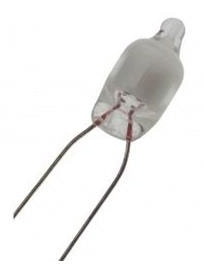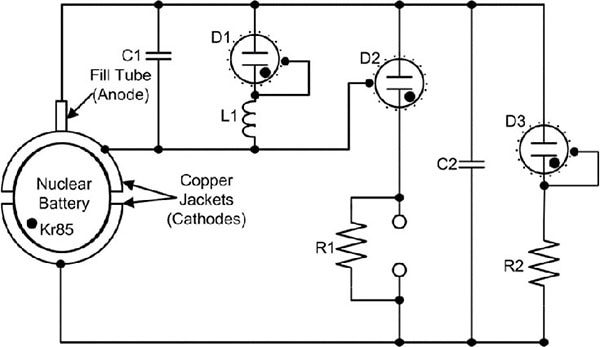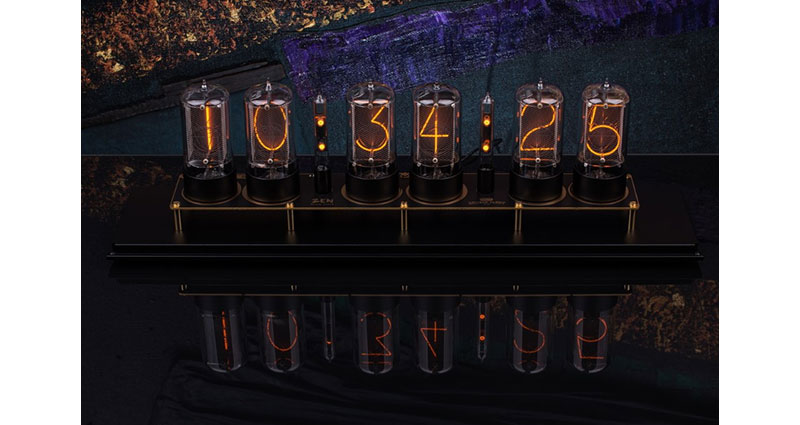How Neon Lamps Helped Self-Powered Aerospace Electronics
Back in the dim ages, when John Kennedy was president of the United States, I worked as an electronics technician building acceleration and altitude sensing devices intended for aerospace applications. These devices were unique in that they were self-powered by a nuclear battery. The battery was based on capturing beta particles (electrons) emitted by krypton 85 (Kr85), the radioactive isotope of krypton. As you can imagine, the available power was in the order of fractions of a milliwatt. In fact, these batteries would generate a constant current of about 600 picoamperes (pA). The active components used in these devices were the rather common neon lamp, like the venerable NE2 lamp that is currently available from Interlight, the WX-EGA2-0 (Figure 1).
 Figure 1: The venerable NE-2 neon lamp’s current incarnation is the Interlight WX-EGA2-0, which is similar to the neon lamps used as active voltage-sensitive switches in self-powered aerospace safety devices. (Image source: Interlight)
Figure 1: The venerable NE-2 neon lamp’s current incarnation is the Interlight WX-EGA2-0, which is similar to the neon lamps used as active voltage-sensitive switches in self-powered aerospace safety devices. (Image source: Interlight)
More modern devices are Lumex Optical Components Inc.’s GT-NE4H1125T or GT-NG6H1825T.
Neon lamps are voltage-sensitive devices. With low applied voltages, they are essentially off with very little current flowing through them. These lamps are somewhat photo and electrostatic-sensitive in this mode, so they are enclosed in a metallic shield. As the applied voltage increases, the gas inside the lamp ionizes, the current through the lamp increases rapidly, and it begins to glow. At this point, a near-constant voltage is maintained across the lamp. If the current is not limited, the lamp will arc between the lamp’s electrodes, the current will increase quickly, and the device is in the on state. Due to these characteristics, the neon lamp can be used as a switch or voltage regulator.
To show how this works, let’s take the example of an altitude-sensitive actuator (Figure 2).
 Figure 2: A self-powered (nuclear battery) altitude-sensitive actuator can use neon lamps as active devices. (Image source: Art Pini)
Figure 2: A self-powered (nuclear battery) altitude-sensitive actuator can use neon lamps as active devices. (Image source: Art Pini)
The nuclear battery consists of a glass ampoule filled with Kr85. The copper filling tube is the battery anode. Dual, hemispherical copper jackets are electroplated on the outside of the ampoule. These form a dual cathode element. As low-altitude air fills the gap between the cathodes, the radiation from the Kr85 ionizes the air and effectively connects the two hemispheres. Capacitors C1 and C2 are charged by the nuclear battery.
The neon lamp, which we called cold cathode gas diodes, served several purposes. D3, together with its series resistor R2, forms a voltage regulator that maintains a constant voltage on C1 and C2. As the altitude increases, the air pressure in the gap decreases until the gap becomes non-conductive. At this point, the voltage regulator is disconnected from C1. With the voltage regulator out of the circuit, the battery’s constant current output increases the voltage from C1 into the inductor, L1. The resulting pulse is applied to the shield of diode D2, causing it to conduct. This dumps the stored charge on C2 into the output terminals. The output can energize a relay or fire an explosive squib as needed. So, the neon lamps operate as voltage regulators and active switches.
Building and testing these extremely low-power devices is quite a challenge. The assembly and test rooms have to be clean and dry. All surfaces need to be cleaned with alcohol; a fingerprint is a short circuit. Capacitors were custom-made using either Teflon or glass dielectric with a minimum insulation resistance of 1015 Ohms (Ω). Key measuring instruments were electrostatic voltmeters and electrometers.
Did I mention that most of the device testing done prior to the units being sealed was done under red darkroom lights?
Conclusion
As discussed, the humble neon lamps that you see on your outlet strips are capable of a great deal more than it seems. They can additionally serve as voltage regulators or breakdown switches that are especially useful in applications that use extremely low power.

Have questions or comments? Continue the conversation on TechForum, DigiKey's online community and technical resource.
Visit TechForum









